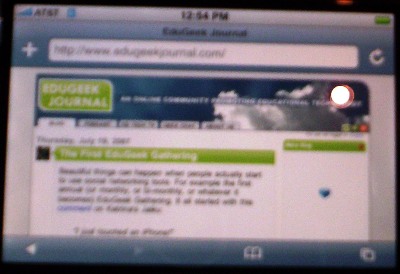Mobile phones in public schools? Maybe even in – classrooms? Don’t we have enough distractions? A few radical individuals have suggested this notion before…. but they are mostly viewed as fringe people with some crazy ideas that aren’t “realistic.”
But are mobile devices in the classroom as evil as we make them out to be? I used to be a Junior High teacher. Let’s be a little realistic here – students can cause massive distractions with a pencil. They goof off and scribble doodles instead of taking notes. They poke other students with them. But we still don’t ban them. We hand out punishments for improper use of the tool at the same time we hand out rewards for the proper use. Could we possibly do the same with cellphones?
Possibly. The transition needed to make this happen would be difficult. But some schools are starting to think in this direction.
According to a New York Times article, some Brooklyn schools are starting a test program that gives cellphones to students. Students are given a certain number of minutes, with more minutes rewarded for good behavior. The bonus for educators is that teachers (and administrators) can use a specially designed system to send text messages to groups of students. Two examples given are to remind students of upcoming tests and to send out school -related information.
Cell phones are still not allowed inside of Brooklyn schools. So there are some weird drawbacks to this program. But they are starting to think in the right direction.
What about actually using the mobile device as part of a class assignment?
One thing I have noticed on plane flights is that the pilot will sometimes come on the intercom and say that someone still needs to turn off their cellphone. Can’t we create devices to tell if there are any cell phones turned on within a certain radius? If you are really worried about students being distracted by cellphones in class, then require students to keep them turned off. Build a detection device that integrates with the messaging system. Problem solved.
Matt is currently an Instructional Designer II at Orbis Education and a Part-Time Instructor at the University of Texas Rio Grande Valley. Previously he worked as a Learning Innovation Researcher with the UT Arlington LINK Research Lab. His work focuses on learning theory, Heutagogy, and learner agency. Matt holds a Ph.D. in Learning Technologies from the University of North Texas, a Master of Education in Educational Technology from UT Brownsville, and a Bachelors of Science in Education from Baylor University. His research interests include instructional design, learning pathways, sociocultural theory, heutagogy, virtual reality, and open networked learning. He has a background in instructional design and teaching at both the secondary and university levels and has been an active blogger and conference presenter. He also enjoys networking and collaborative efforts involving faculty, students, administration, and anyone involved in the education process.
